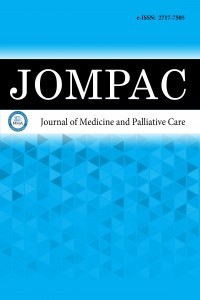1.
Mieczkowski M, Mrozikiewicz-Rakowska B, Kowara M, Kleibert M, Czupryniak L. The Problem of Wound Healing in Diabetes-From Molecular Pathways to the Design of an Animal Model. <em>Int J Mol Sci. </em>2022;23(14):7930.
2.
Okur ME, Bulbul EO, Mutlu G, et al. An updated review for the diabetic wound healing systems. <em>Curr Drug Targets. </em>2022;23(4): 393-419. doi:10.2174/1389450122666210914104428
3.
Comino Sanz IM, Lopez Franco MD, Castro B, Hidalgo PL. The role of antioxidants on wound healing: a review of the current evidence. <em>J Clin Med. </em>2021;10(16):3558. doi:10.3390/jcm10163558
4.
Madiseh M, Tehrani A, Bahmani M, Kopaei M. The research and development on the antioxidants in prevention of diabetic complications. <em>Asian Pac J Trop Med. </em>2016;9(9):825-831. doi:10. 1016/j.apjtm.2016.07.001.
5.
Han SK. Basics of wound healing. Innovations and Advances in Wound Healing: Springer. 2023;1(2):1-42.
6.
Rodrigues M, Kosaric N, Bonham CA, Gurtner GC. Wound healing: a cellular perspective. <em>Physiol Rev. </em>2019;99(1):665-706. doi:10.1152/physrev.00067.2017
7.
Pakyari M, Farrokhi A, Maharlooei MK, Ghahary A. Critical role of transforming growth factor beta in different phases of wound healing. <em>Adv Wound Care. </em>2013;2(5):215-224. doi:10.1089/wound.2012.0406
8.
Anderson K, Hamm RL. Factors that impair wound healing. <em>J Am Coll Clin Wound Spec. </em>2012;4(4):84-91. doi:10.1016/j.jccw. 2014.03.001
9.
Putri IL, Alyssa A, Aisyah IF, Permatasari A, Pramanasari R, Wungu CDK. The efficacy of topical oxygen therapy for wound healing: A meta-analysis of randomized controlled trials and observational studies. <em>Int Wound J. </em>2024;21(7):14960.
10.
Ozhathil DK, Wolf SE. Prevention and treatment of burn wound infections: the role of topical antimicrobials. <em>Expert Rev Anti Infect Ther. </em>2022;20(6):881-96.
11.
Firat C, Samdanci E, Erbatur S, et al. Beta-glucan treatment prevents progressive burn ischaemia in the zone of stasis and improves burn healing: an experimental study in rats. <em>Burns. </em>2013;39(1):105-112. doi:10.1016/j.burns.2012.02.031
12.
Sargin SA, Akçiçek E, Selvi S. An ethnobotanical study of medicinal plants used by the local people of Alaşehir (Manisa) in Turkey. <em>J Ethnopharmacol. </em>2013;150(3):860-874.
13.
Yılmazoğlu E, Hasdemir M, Hasdemir B. Recent studies on antioxidant, antimicrobial, and ethnobotanical uses of hypericum perforatum L.(Hypericaceae). <em>J Sci Food Agric. </em>2022;9(1):373-394.
14.
Nobakht SZ, Akaberi M, Mohammadpour AH, Tafazoli Moghadam A, Emami SA. Hypericum perforatum: traditional uses, clinical trials, and drug interactions. <em>Iran J Basic Med Sci. </em>2022;25(9):1045-1058. doi:10.22038/IJBMS.2022.65112.14338
15.
El Biali M, Wolfl Duchek M, Jackwerth M, et al. St. John’s wort extract with a high hyperforin content does not induce P-glycoprotein activity at the human blood-brain barrier. <em>Clin Transl Sci. </em>2024;17(5):13804. doi:10.1111/cts.13804
16.
Yilmaz M, Dokuyucu R. Assessment of sensitivity to the anesthesia in a diabetic rat model. <em>Eur Rev Med Pharmacol Sci. </em>2023;27(19):9029-9033. doi:10.26355/eurrev_202310_33927
17.
Dokuyucu R, Gozukara KH, Ozcan O, et al. The effect of Bongardia Chrysogonum on prostate tissue in a rat model of STZ-induced diabetes. <em>Springerplus. </em>2016;5(1):1322. doi:10.1186/s40064-016-2973-z
18.
Gul V, Cetinkaya H, Dinler BS, Sefaoglu F. Comparative analysis of biochemical content, antimicrobial and antioxidant activities of hypericum perforatum l. Species is grown in Turkiye. <em>Pak J Bot. </em>2023;55(1):1277-1285.
19.
Farasati Far B, Gouranmohit G, Naimi Jamal MR, et al. The potential role of Hypericum perforatum in wound healing: a literature review on the phytochemicals, pharmacological approaches, and mechanistic perspectives. <em>Phytother Res. </em>2024;38(7):3271-3295. doi:10.1002/ptr.8204
20.
Yalcinkaya E, Basaran MM, Tunckasik ME, Yazici GN, Elmas C, Kocaturk S. Efficiency of hypericum perforatum, povidone iodine, tincture benzoin and tretinoin on wound healing. <em>Food Chem Toxicol. </em>2022;166(1):113209. doi:10.1016/j.fct.2022.113209
21.
Arsic I, Zugic A, Tadic V, et al. Estimation of dermatological application of creams with St. John’s Wort oil extracts. <em>Molecules. </em>2011;17(1):275-294. doi:10.3390/molecules17010275
22.
Aksu AN, Bilgic T, Kayhan CK, Saglam ZMI, Caf N. Partial healing effects of St. John’s Wort oil on the rat excisional wound model. <em>Marmara Med J. </em>2022;35(1):281-287.
23.
Ozdemir S, Bostanabad SY, Parmaksiz A, Canatan HC. Combination of St. John’s Wort oil and neem oil in pharmaceuticals: an effective treatment option for pressure ulcers ini ntensive care units. <em>Medicina. </em>2023;59(3):467.
24.
Coban SN, Polatoglu I, Eroglu E. Methyl cellulose/okra mucilage composite films, functionalized with Hypericum perforatum oil and gentamicin, as a potential wound dressing. <em>Int J Biol Macromol. </em>2024;254(1):127757. doi:10.1016/j.ijbiomac. 2023.127757
25.
Markoska E, Gramatnikovski N, Pechijareva-Sadikarijo I, Krstevska-Blazhevska S, Matevski V. Home care and the effects of Hypericum tetrapterum oil extract in the treatment of chronic wounds during the COVID-19 pandemic. <em>Pril. </em>2022;43(3):79-89. doi:10.2478/prilozi-2022-0040.
26.
Akturk A, Kasikci FN, Dikmetas DN, Karbancioglu Guler F, Erol Taygun M. Hypericum perforatum oil and vitamin A palmitate-loaded gelatin nanofibers cross-linked by tannic acid as wound dressings. <em>ACS Omega. </em>2023;8(26):24023-24031. doi:10.1021/acsomega.3c02967
27.
Kaplan V, Hasanoglu Erbasar GN, Cigerim L, Altay Turgut H, Cerit A. Effect of St. John’s Wort oil and olive oil on the postoperative complications after third molar surgery: randomized, double-blind clinical trial. <em>Clin Oral Investig. </em>2021;25(4):2429-2438. doi:10.1007/s00784-020-03639-0
28.
Novelli M, Masiello P, Beffy P, Menegazzi M. Protective role of St. John’s wort and Its components hyperforin and hypericin against diabetes through Inhibition of inflammatory signaling: evidence from In vitro and In vivo studies. <em>Int J Mol Sci. </em>2020;30(21):8108. doi:10.3390/ijms21218108

